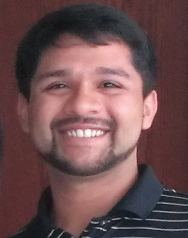The Healthy Dose: Free Radicals Part 1
By Parth Dwivedi
HOUSTON: Welcome to the first installment of The Healthy Dose, where I will illustrate some of the principles that drive the human body.
Understanding some of the processes behind illness is important. I want to show my readers that a spectrum of conditions exists between health and sickness; there is not always one point at which you become sick.
I also feel that many confuse interpretations with facts. I trust American physicians with my life and do not advocate straying from professional medical advice at all. I merely hope to give people a framework to think inside of in order to intelligently guide their questions and decisions.
Knowledge is everywhere in the Information Age. You can see this with a quick Google search of almost anything. Finding the facts is not hard—sorting through them is hard. For this reason I do not want to emphasize facts as much as concepts. With that, we can get started.
Free radicals show up in many popular health and diet trends but it can be difficult to understand what they are and what they do. This is a broad topic so it will be split into two installments.
In order to learn a little bit more about free radicals we must realize that nature, and our bodies, operate under many sets of rules. These rules are what make free radicals what they are.
We are made of atoms, which are essentially a nucleussurrounded by electrons. The way these electrons jump around between atoms is what creates the study of chemistry, and this is what we will focus on to understand what a free radical is.
The most important rule to keep in mind is that electrons like to come in pairs. Nature does not like an atom with an odd number of electrons. This rule needs to be followed so strongly that an atom with the wrong number of electrons will take them from another atom, in turn leaving that one with the wrong number of electrons. This process continues until eventually two atoms with an odd number of electrons meet and combine their electrons to share between them, creating a permanent attachment in the process. New molecules can be formed in this way, and free radicals are simply the atoms or molecules that have the wrong number of electrons.
Now that we know what a free radical is, we can talk more about why they are such a big deal next week.
Parth Dwivedi has a B.A. in Neuroscience and an M.S. in Biomedical Sciences. He likes reading non-fiction and still watches I Love Lucy.


